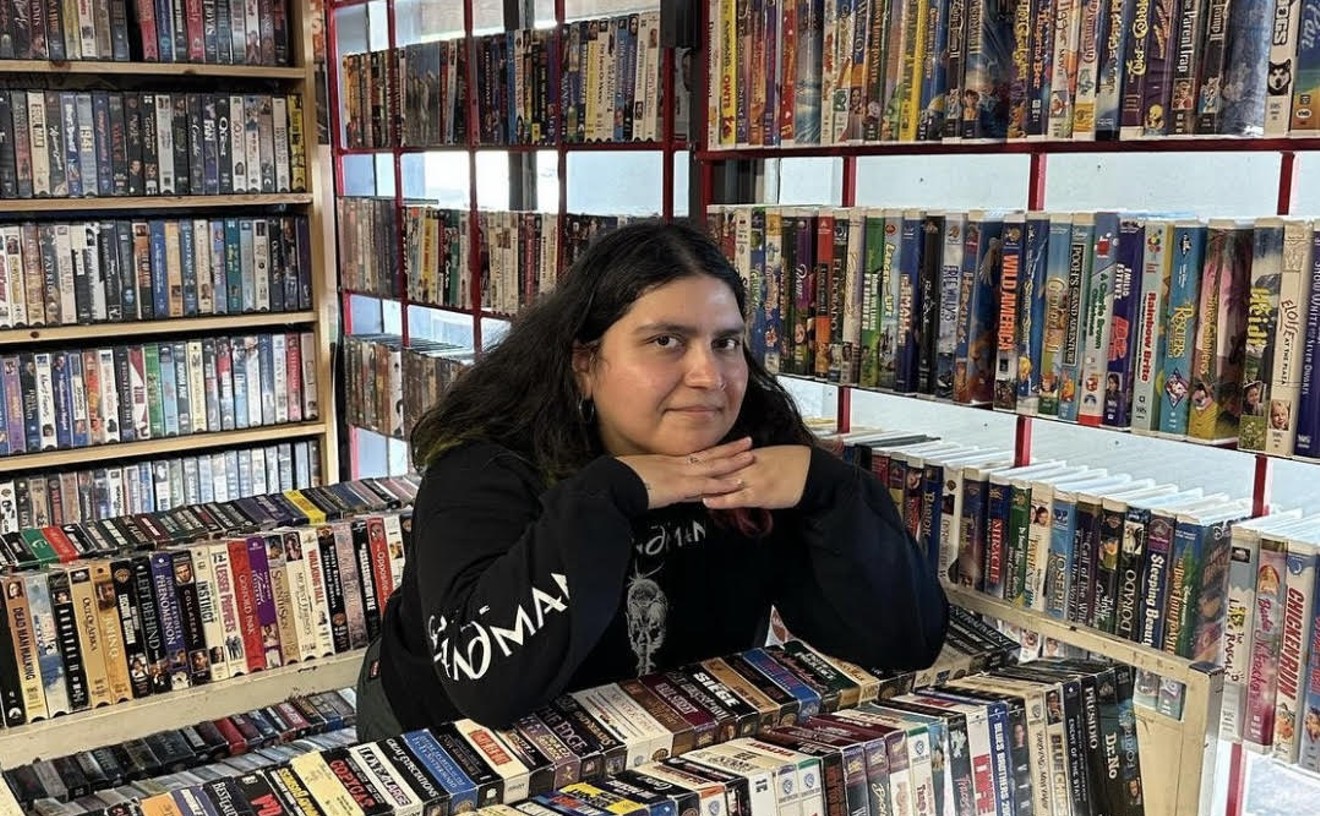Patriarca's photos are reminiscences of both people and things. They tell not only of the existence of humans but of the collective memory of objects. Rat-turd icons these are not.
Showing at the Goss Gallery, the work in L'Appartement manages to be nostalgic without sentimentality. Patriarca's 15 photographs and Sibylle Pieyre de Mandiargues' "The Apartment," an essay in the accompanying catalog, are together hard-won proof that artwork can be made, that apertures can be open and shut and words written, in homage to memory without being syrupy and cloying.
All is beautifully wrought. Patriarca injects the wistfulness of subject matter with the matter-of-factness of intelligent technique. Patriarca shoots with old 35 mm cameras from the 1950s and '60s because he likes the faded colors worked by yesterday's lenses. What might result in the deep, hazy wishfulness of an image, though, is undercut by the fact that he mounts the photos on flat aluminum surfaces. The photos float in the galleries at Goss, frameless and ethereal. Patriarca strikes a subtle balance of opposites in placing the photos on flat industrial surfaces. As with Warhol's silkscreens of celebrities from the early 1960s, the flatness of the photos makes them unimpaired by the pretense of false expressivity. At the same time, however, they are ghostly and haunting images suggestive of an unconscious world.
Their titles imply a nonchalant descriptiveness that similarly runs counter to the would-be emotionality of the lifelong memories they distill. "L'appartement 20" is an off-white image of brownish-black variously scaled squares on a wall. They create a geometric wall pattern out of the stains left by pictures that once adorned the wall. "L'appartement 11" is a close-up image of a hole rent in the crackled brown leather of an old armchair. Using numbers to title these fragmented forms makes the images specimen-like rather than emotion-laden mementos. The numbered titles substantiate the cool disinterested calm of the photos, yet the photos are not mere reportage. "L'appartement 5" shows a small circle flanked by two right angles, all of which are the formless reminders of a teeny tondo and other accoutrements that once sat on the wall. Their slivered quality delivers abstraction in form that is narrative nonetheless.
The photographs tell a story of Mandiargues' parents, who once lived in the apartment in Paris where she and her husband, Patriarca, now live. It is a story driven by powerfully contradictory forces. They are photos that speak of a life made full by collecting. And at the same time they are intimate portrayals of loss. They tell a story not only of people who once lived richly with their art, but of the destiny those people shared with their things: that entropy pulls all matter, people and objects alike, into a larger morass-like mass. Suddenly it would appear that, similar to humans, objects are biological beings. They live and die. So it follows that this apartment was once a menagerie, a blithe, animated holding for humans and their objects of deportment.
With great finesse, Patriarca homes in on the mechanical ability of photography, laying bare one essential function of the camera--that it is a prosthetic apparatus that transforms an artist into miraculous robot-maker. It unleashes the human from emotions and psychological mooring while giving him the chance (and here it is a transformation that is by all means arbitrary) to capture the truth of another's situation. What we find in the photos of Patriarca is a poignant pronouncement on the relationship people have with their things. Objects provide humans with identity, a sense of self that is not deeply held but husk-like. We acquire things because we love them, and they in turn operate like the plates of a protective carapace.
Inasmuch as the photos of the Parisian apartment work through the certainty that the "collector is a true inmate of the interior," to quote Benjamin again, Patriarca's five photos of the "Accona Desert" reveal an imagined past continuously relived today in the exterior. The photos are of the foggy, low-lying Tuscan hills that surround a medieval Benedictine monastery that is still active. Here Patriarca gives form to similar issues of memory-rehearsal but in an unusual cracked-earth setting 20 minutes outside of Siena. Like the photos of the interior, these too are bleary fragments. But instead of a place of loss, the dark green hillocks are the path-lands of ascetic monk wanderers who live out memory in their daily peripatetic walks in and along the hills.
Patriarca's background is interesting: He was trained as a lawyer and not an artist. He is self-taught as an artist-photographer. We might conclude that this is a rare instance in which a so-called "outsider" artist penetrates the world of high art--art as philosophical discourse, object and market--regardless of his lack of training. Then again he is European and, when it comes to art on the continent, with its abounding patrimony of ruins, museums and compulsory art history education, there are few outsiders. To throw a bone to the lawyers out there, perhaps it is because he was once a lawyer that he is able to so cogently strike the ever-infrequent balance of cool emotional content where remembrance has met logic in the form of a Teflon-surfaced picture of stained and cracked walls.










